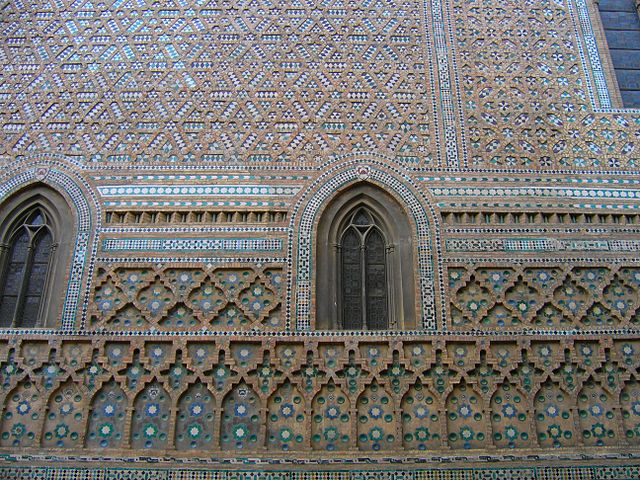Mudéjar were Muslims who remained in Iberia in the late medieval period following the Christian reconquest. It is also a term for Mudejar art, which was much influenced by Islamic art, but produced typically by Christian craftsmen for Christian patrons.
14th century tower of the church of San Salvador in Teruel, Spain, an example of what is known as Mudéjar art
Market street or Assoc (from the Arabic As-Suq) of the Morería (medieval Muslim quarter) of the Catalan city of Lleida/Lérida between late 13th century and early 14th century.
Mudéjar art, or Mudéjar style, was a type of ornamentation and decoration used in the Iberian Christian kingdoms, primarily between the 13th and 16th centuries. It was applied to Romanesque, Gothic and Renaissance architectural styles as constructive, ornamental and decorative motifs derived from those that had been brought to or developed in Al-Andalus. These motifs and techniques were also present in the art and crafts, especially Hispano-Moresque lustreware that was once widely exported across Europe from southern and eastern Spain at the time.
The bell tower of the church of San Salvador, Teruel, Aragon
Façade of Parroquieta Chapel of La Seo de Zaragoza, Aragon, a gothic building with elaborate mudéjar masonry
Mudéjar style ceiling carpentry, Segorbe town hall (former ducal palace), Valencia Region
Nuestra Señora de Loreto, Algezares, city of Murcia: wooden ceiling on "diaphragm" arches






